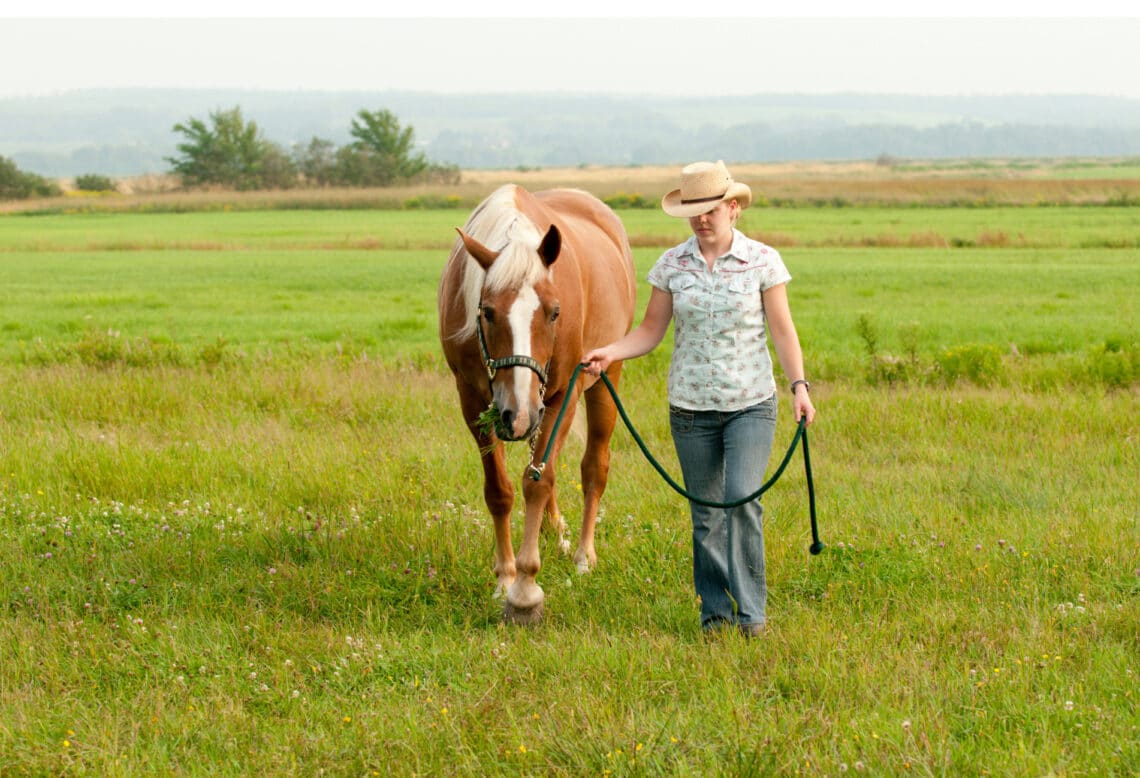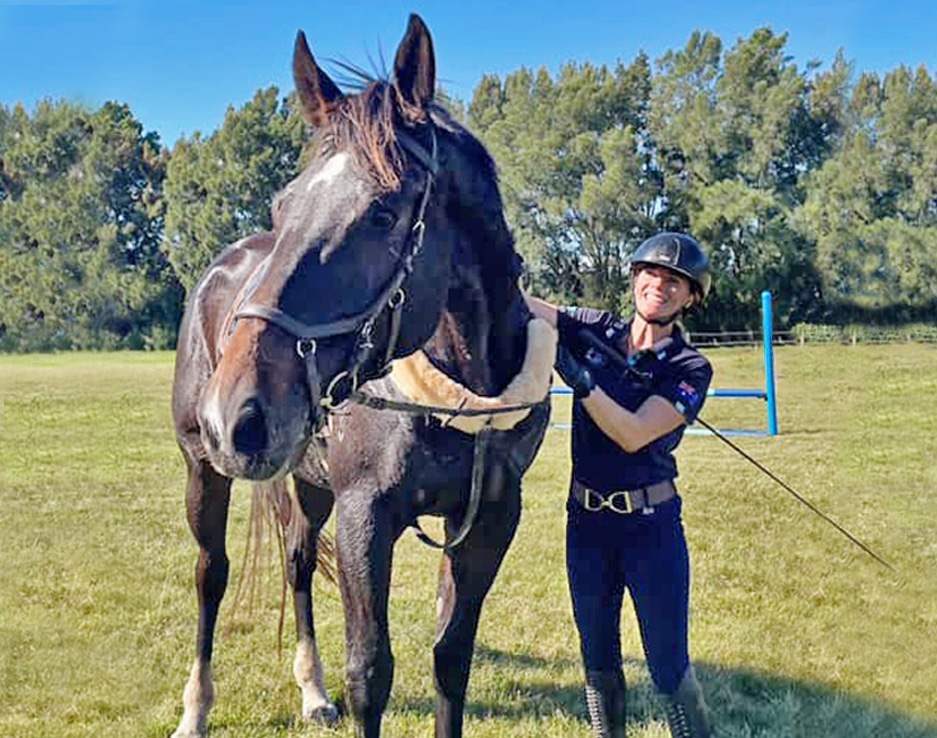
Six tips to becoming your horse’s leader
Are you the leader or the follower? CHRISTINE ARMISHAW has some top tips to help you become your horse’s leader.
In your partnership with your horse, there will always be two roles: one as the leader, and the other as the follower. If you as the rider or handler are not purposefully being the leader, then by default, your horse will have to lead.
Generally speaking, horses feel comfortable when they are guided, but will become stressed (producing the stress hormone cortisol) if they have to do the leading. In a herd situation, a dominant mare is responsible for moving the other horses around, picking where they eat, and so on – and she will have a more stressful time of it than the rest of the herd, who happily follow along.
- The eyes have it: Firstly, you need to establish whether or not your horse is stressed. One of the best ways to decide that is by checking on your horse’s eye position in relation to their wither. If their eye is above the wither, you could probably argue that there’s some degree of stress. If you watch horses in the paddock who have seen or heard something that’s startled them, the first thing they’ll do is throw their heads up before becoming very still. Their eyes go hard, they don’t blink so much, and their mouths will become quite tight.

So, while you’re working with your horse, either handling or riding them, you want them to have their eye in line with their wither, because that’s a much more relaxed posture. And when they’re relaxed, they’re better able to be attentive to what you’re asking, and not be so distracted or influenced by whatever is going on around them.
- Watch their ears: Whatever your horse’s ears are pointing towards is what they’re currently thinking about. And that can be something that’s happening for two or three seconds when they’re momentarily distracted, or it could be a lot longer. But if they’re standing and fixating on something, there’s every chance a spook is brewing. What you may not realise is that you have the opportunity to diffuse that spook before it even becomes a thing by jiggling the reins or giving the horse a little nudge with your heel just to remind them that you’re still there, because in that moment, you’ve ceased to exist.
By giving them a reminder, they’ll flick their ear back to you and as they do, you’ll feel their body soften, because they’re like ‘oh yeah, rider aboard!’. So, if you notice their ears are pricked for two to three seconds or more, and they haven’t flicked their ears back to you to check in, you need to do something that says ‘Excuse me, I’m still here’. If you’re at a show or some other event, you’ll likely find you have to do that quite frequently.
- On the ground: Often people will say their horse is fine when they lead them past something – a random log, for example – but when they get on, the horse is suddenly convinced there’s a monster there. So, what’s happening? It’s because when people lead their horses they tend to lead from in front, which means they’re in front of the horse’s eyes, rather than being behind the eye as they are when they’re in the saddle.
A good exercise is rather than leading from in front, stay at your horse’s shoulder and send them ahead of you. Initially, especially if they’re a little bit reserved, they won’t easily go forward and I’ll usually carry a dressage whip and give them a little tap where the stirrup would be. It might be a bit stop and start to begin with, because they’re waiting for you to physically be in front of them. However, by getting them to move forward with their head out in front of you, suddenly they’ve got to look at everything themselves. Then, as they become more confident, when you get on their back and you’re physically behind their eyes, it’s not such a drastic change.
- Feeling the horse: When we’re on the horse, we need to be able to feel them. What does that mean? It means you shouldn’t just sit there and leave them out there on their own. Instead, have an elastic contact on the reins so you can feel the weight of the bit in your hands; and have your legs wrapped around their body. If you are not physically in contact with each other, you can’t easily communicate with each other.
- Give your horse a job: As a leader, if you give your horse jobs, the more they’re going to be paying attention to you. While they might be quiet when you’re at home, when you’re out at a competition they might find it really hard to focus on you – and the more fractious the horse is, the more you should either change the job you’ve given them or alternate between jobs. For a really fractious horse, the plan is to change what you’re doing literally every eight strides. Practice this at home – it will feel like the change comes up so fast, and it does, but the point is that your horse won’t have time to become distracted because you’re already on to the next thing.
These jobs can be as basic as alternating between walking for eight long strides followed by eight short strides, or alternating between walk and trot. The point is that you’re engaging their brain by constantly changing what you ask them to do – but what we’re not doing is waiting for them to double prick their ears at something and freak out because they’ve been left to their own devices for too long!
- Sideways is your friend: We’ve talked about giving them jobs, but if you can get your horse to move sideways, there are multiple benefits. Asking them to move sideways by stepping their hind leg underneath their body will engage their core, lift their back, and subsequently lower their head, which brings us back to the very first point about the eye position.
By finding a soft way to encourage the horse to lower their head, you’re getting them into a nice, relaxed thinking state, where their eyes are level with their wither. This is called an engaged posture, which leads to mental engagement. Because horses, like humans, can only think about one thing at a time, they’ll be concentrating on taking that step underneath their body, rather than on monsters hiding in the corner.
Christine Armishaw Equestrian offers a variety of coaching and other equestrian services at her Otford Valley Equestrian Agistment & Training Centre just south of Sydney, NSW.



